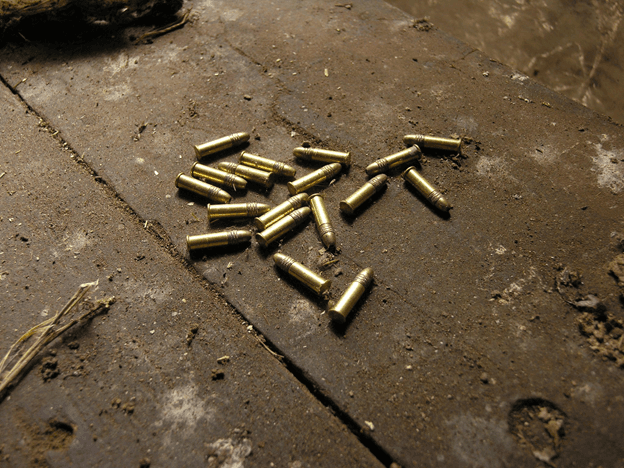So you need to restock the ammo cans for your rimfire. No big deal, .22LR bulk ammo is .22, right?
Not exactly. In fact, far from it. There is a great deal of variety in .22LR, to the point that you might think it’s a surprise that this cartridge doesn’t have more applications than it does.
With the price of ammo the way it is (and given the fact that you can’t reload .22 casings anyway, more on that in a moment) you don’t want to buy a brick or a bucket and then instantly regret it.
To help you avoid that buyer’s remorse, here are 4 things you should know about .22LR before you buy it in bulk.
.22 Long Rifle Is Not the Same As .22L or .22 S
First, it’s critical to recognize that .22 is a caliber, not a cartridge. This means that not all .22 ammo is the same - in fact, there’s quite a bit of variation here.
Conversely, .22LR is a cartridge, which means if your gun’s barrel is stamped .22LR, it can shoot .22LR, that is, .22 Long Rifle.
Now, there are some guns - mostly lever actions - with chambers that can shoot not only .22LR but also .22L (.22 Long) and .22S (.22 Short) cartridges.
However, it is important to recognize that these cartridges are not the same, are not interchangeable, and you should only fire a cartridge through a gun if it is expressly designated for that cartridge.
Firing a short through a chamber designated for long rifle? Probably not that big of a deal - but it can be dangerous to try to chamber an LR cartridge in a Short chamber.
It’s easy to overlook this, especially if you’re a new gun owner and your first gun was a .22. Therefore, make sure you’re aware of the nuances that exist in the world of .22 rimfire ammo.
You Can’t Reload .22
This matters for two reasons. One is that if you get something you don’t like, it’s not even like you can shoot through it and reload the casings. The other is that if you get something you don’t like, you’re basically stuck with it.
If you get centerfire ammo you don’t really like, in the worst case scenario you can probably use it for plinking, then save and reload all the casings. That’s not the case here - no pun intended.
Therefore, it benefits you to understand what you’re getting before you buy it. Make sure it’s the right cartridge, and that moreover, the bullet type and muzzle velocity are suitable for your intended application.
Subsonic .22 (Sometimes Marketed as Quiet .22) Won’t Cycle Some Actions
One pitfall you’ll want to avoid is buying subsonic .22LR bulk ammo, unless that’s what you actually need.
The reason for this is that subsonic .22, sometimes referred to as “quiet 22,” doesn’t produce enough pressure or energy to cycle many autoloading actions.
Therefore, if you shoot a semi-auto handgun or rifle, and try to run subsonic .22 through it, you might end up with a lot of jams.
Now, at the same time, there is a time and place for subsonic .22. It produces very little recoil and muzzle pop, which makes it a lot easier on the ears.
On top of that, subsonic .22 can be effective for hunting small game or dispatching trapped furbearers because it is not overpowered and gets the job done ethically without spooking other game in the area.
But, the most important part is not to buy a whole boatload of subsonic .22 without knowing what you’re getting into.

Be Conscious of Bullet Type and Load Velocity
There are two main things that will influence the performance of a .22 round. These things are bullet type and load velocity.
For most practical applications, standard velocity ammunition will be more than enough, especially for training or plinking.
You might want to bump up to high velocity or hyper velocity rounds if you are competing or hunting, as these will shoot flatter and hit harder.
However, bullet type is most important here. Lead round nose bullets are ideal for plinking, as they are reliable and accurate. Opt for copper plate if you want to minimize lead fouling in your gun. Alternatively, you could choose flat-nose bullets, also known as wadcutters, if you’re competing and want to make scoring easier, as these bullets leave round, clean holes in paper targets.
For hunting, however, you might want to consider a hollow point. Hollow point .22 LR ammo produces a lower risk of overpenetration and is most effective at dumping its energy into a target, thereby producing a quick, clean, ethical dispatch.
Here for .22LR Bulk Ammo?
Are you ready to pull the proverbial trigger on a got deal for .22LR bulk ammo? Get it here at Bucking Horse Outpost and then make sure you check out our other deals and police trade-in specials. You never know what you might find, and when a deal’s gone, it’s gone.

